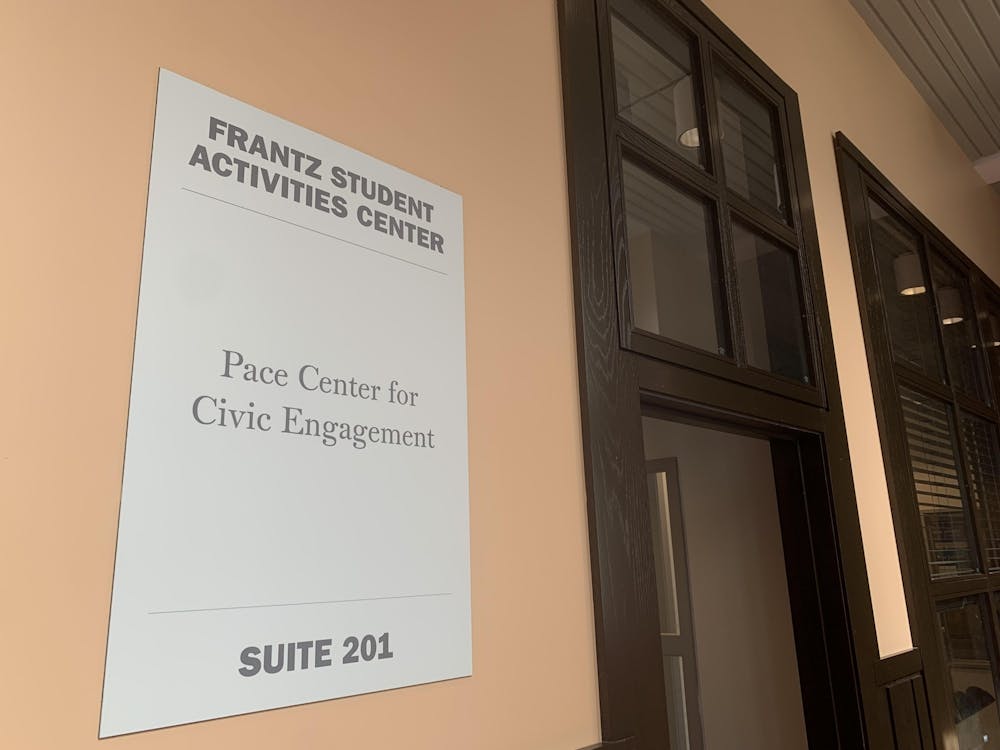The following is a guest contribution and reflects the author’s views alone. For information on how to submit an article to the Opinion Section, click here.
For a school whose informal motto boasts of serving the nation and humanity, it is peculiar that only 40 percent of outgoing seniors report taking part in community service activities during their four years at Princeton. Among incoming first years, that number is much higher — three-fourths engaged in community service during high school. For students who do participate in service activities, there is a strong support system for direct community service through the Pace Center for Civic Engagement and its programming. However, there is clearly a disconnect between the center and students that facilitates a leaky pipeline in direct community service participation. Some of the University’s initial attempts to solve this problem have fallen short – we need a solution, like a mandatory service requirement that recognizes the causes for this disconnect and specifically addresses them.
This year, the Pace Center organized a Civil Society Service Focus cohort to investigate the barriers to service on campus. Through conversations with individuals and groups across campus, we identified a few of these barriers to deep civic engagement.
First, the detachment of the student body from the greater Mercer County community makes it hard for individual students to match their skills to tangible needs. Moreover, the time pressures of a rigorous Princeton course schedule make it difficult to commit anything more than a cursory, performative amount of time. Students do not want to give a half-hearted effort and don’t think they can do more due to the demands of schoolwork. In our interviews, students also reported that service organizations don't truly make the difference they claim to make. Students show up to club meetings every week with big hopes, only to finish another semester without any real sense of having contributed to the Princeton community.
The direct service environment at Princeton lacks both the sustainable infrastructure and the long-term student engagement necessary to thrive. To remedy this, we can start by bolstering the Programs for Community Engaged Scholarship (ProCES), which supports a set of service-oriented courses. ProCES is a great conceptual model for students to integrate service into their academic experience here at Princeton. However, only a select subset of ProCES courses are led by a professor who has deep ties to the community and an interest in integrating direct service into the course material. As a result, these courses often differ in their level of incorporation of direct service into the course syllabus, with some professors completely neglecting direct service save a brief mention at the beginning of the course, and others integrating weekly direct service assignments as a part of the core curriculum of the course.
If the University truly hopes to make civic engagement a central element of life at Princeton, attention needs to be directed towards improving the quality of service opportunities available before increasing the quantity of those opportunities. While it's tempting to direct Princeton’s resources toward new initiatives in the hopes that a wider variety of clubs and organizations will draw in more students, those students are more likely to engage with sustained service during their Princeton careers if they can choose to participate in fewer, better-developed programs where they truly feel they are making a difference.
Despite the flaws that exist within the landscape of service at Princeton, there are still many students who are able to meaningfully incorporate direct service into their time on campus. Some students accomplish this through volunteering as EMTs or tutoring students one-on-one. A common feature among the more successful models of direct service at Princeton, however, is the significant and sustained time commitment that they require.
A successful systematic solution to the direct service deficit at Princeton would first have to recognize both the considerable time required from individuals to form meaningful service experiences and the lack of spare time that most Princeton students have, then find a way to bridge the gap between these two conditions. A mandatory service requirement would do exactly this, by integrating time for direct service into the time students already devote to coursework.
However, before service learning can be made mandatory, it must be made better. As ProCES and service-learning opportunities expand across departments, it is not enough to stick labels on any course and briefly discuss the pro-social applications of the curriculum at the end of the semester. Rather, the University should start by investing in ProCES courses and their instructors in order to ensure consistent engagement with at least one community partner throughout the term. By building consistent and robust pathways to community service into curricula, we can create a culture that moves beyond lip service and actually embodies our informal motto.
This guest contribution was drafted by Jalen Travis, Zoe Evans, Shakhnoza Salimjonova, and Isabel Schoeman on behalf of the 2021-2022 Civil Society Service Focus Cohort. You can reach them at jwtravis@princeton.edu, zevans@princeton.edu, ss82@princeton.edu, or is6@princeton.edu, respectively.









